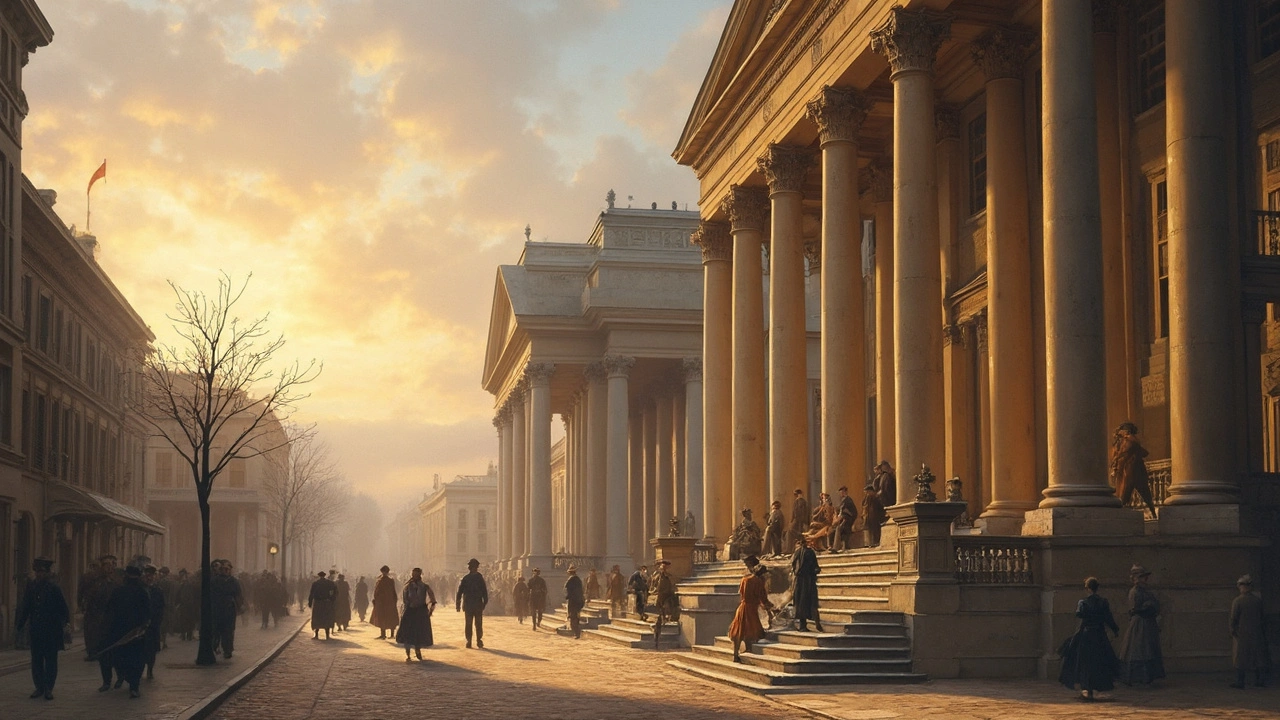Federal Architecture is a key element of American design, reflecting the country's ideals and aspirations from the late 18th to early 19th centuries. Its simplicity, symmetry, and elegance make it distinct and have left a lasting legacy on the nation's cityscapes. This style incorporates elements from Roman and Greek influences, blending them into a uniquely American form. The architecture not only tells a story of the nation's budding identity but also showcases how design can embody cultural values. Understanding Federal Architecture allows for greater appreciation of America's architectural heritage.
American design: recognize styles, use them in your home
American design grew by mixing traditions. You’ll see colonial symmetry, Greek Revival columns, Beaux-Arts grand public buildings, and homegrown styles like American Craftsman, ranch houses, and mid-century modern. That mix makes U.S. architecture easy to read once you know what to look for.
Want quick ID tips? Look for rhythm and scale. Colonial and Georgian buildings favor strict symmetry, centered doors, and sash windows. Greek Revival shows bold columns and triangular pediments. Beaux-Arts buildings are grand, with stone facades, sculpted details, and wide stair approaches. American Craftsman houses are low, with broad porches, tapered columns, exposed rafters, and built-ins inside. Ranch houses are single-story, long, with open plans and sliding glass doors. Mid-century modern favors clean lines, thin roofs, floor-to-ceiling glass, and simple organic materials.
How styles affect your space
Picking a style helps you make clear choices. If you like Craftsman, focus on wood trim, built-in shelving, and natural finishes. For mid-century, choose simple furniture, low profiles, and a palette of warm woods and pops of color. Want a ranch vibe? Open the plan, add large windows, and use seamless indoor-outdoor transitions. Don’t mix too many eras—pick one main language and add accents from a second style for contrast.
Renovation and preservation tips
If you’re restoring an old house, keep proportions and original details. Replace materials only when necessary and match profiles for trim, moldings, and windows. For energy upgrades, add insulation and storm windows without changing the facade. Paint can transform a facade quickly—study period palettes before you choose. When adding new elements, respect rooflines and entry placement so the addition reads like part of the house, not an afterthought.
Public buildings in American cities often borrow from European movements but scale them differently. Think Beaux-Arts courthouses and Greek Revival statehouses—big, formal, and meant to impress. After World War II, the U.S. exported mid-century modern to suburbs and corporate campuses, shaping how Americans live and work.
Practical moves for homeowners: photograph details before work, label trim and hardware, shop salvage yards for matching parts, and consult local preservation guidelines if your house is in a historic district. Small fixes—replacing broken sash cords, repairing porch floors, or resealing a clay tile roof—keep a building breathing and prevent bigger costs later.
American design is not one thing. It’s a conversation between imported ideas and local needs. Learn to read the details, make choices that respect scale and materials, and your renovations will feel honest and timeless.
If you want inspiration, visit local examples. See a Craftsman in a leafy neighborhood, a low-slung ranch in suburban blocks, or a clean-lined mid-century home near a university campus. Museums and city walking tours show Beaux-Arts and Greek Revival landmarks. For modern ideas, browse mid-century interiors by designers like Charles and Ray Eames or outdoor-focused projects by Frank Lloyd Wright. Take photos, note materials and proportions, and match one or two elements you can actually afford to change—tile, paint, hardware—before you start big work.
Enjoy.

